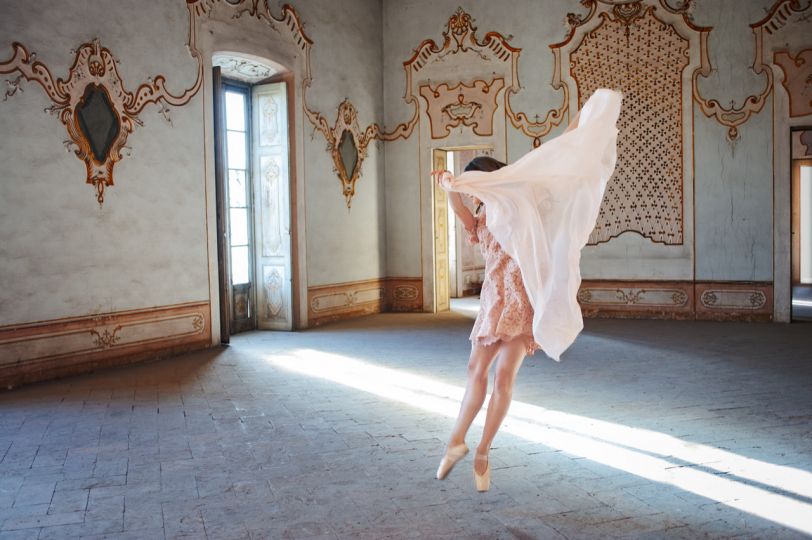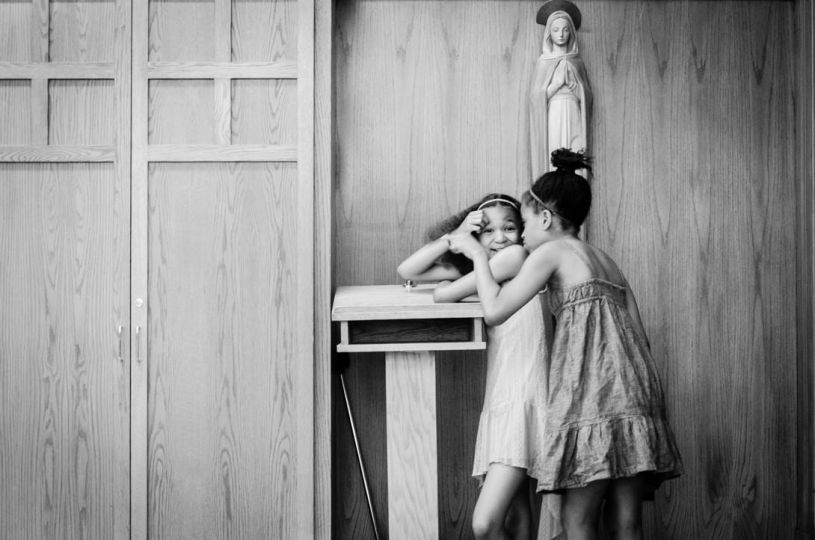Morteza Niknahad : Modernity and Tradition
Morteza Niknahad belongs to a lineage of contemporary Iranian artists seeking to preserve and transform their country’s cultural heritage within the context of modernity. His work is characterized by a refined, poetic aesthetic that resonates with spiritual and philosophical themes while addressing social and political issues.
Niknahad often uses photography as a means of expressing deeply personal and cultural narratives. His mastery of chiaroscuro and composition gives his images an enigmatic, contemplative atmosphere, inviting multiple interpretations. By layering symbols, textures, and graphic elements derived from Persian culture, he creates a visual dialogue that questions shifting identities and values in today’s world.
Exhibited in numerous galleries—including, currently, Galerie 20 Thorigny in Paris—and international festivals, his work draws attention for its ability to capture universal emotions through a unique cultural lens. Morteza Niknahad is also involved in initiatives aimed at promoting photography and visual arts in Iran, contributing to a movement that seeks to amplify the voices of Iranian artists on the global stage.
Instagram : @morteza.niknahad – @galerie20thorigny
What was your first trigger for photography?
Morteza Niknahad: Discovery. I’ve always been drawn to research and exploration. Still images can be full of mystery. The viewer only sees part of a scene, whether it’s fictional or documentary. When no precise information is provided, they try to understand what they see, and questions arise one after the other. Curious people never stop asking questions; they just change from one thing to another.
The man or woman in an image who inspired you?
M.N.: My mother has always been a source of inspiration for me.
The photo you wish you had taken?
M.N.: The question is a bit vague to me, but as I understand it, my answer would be that I’d like to go to the darkest places on Earth and take photographs there with a night vision camera. Or, to be honest, I’d like to be a photographer of freedom; I’d like to photograph my people’s freedom.
The person who influenced you the most?
M.N.: I can’t name one specific person, but several names come to mind: Marcel Proust, David Lynch, Abbas Kiarostami, Tarkovsky, Bahman Mohasses, Persian Gulf sailors… there are many. Each in their own way.
Which photo changed the world?
M.N.: No photo changes the world; the world is a raw entity. A photo can only move it.
And which photo changed your world?
M.N.: I’m not sure, perhaps the photos of a Japanese photographer, but I have doubts.
What was the last photo you took?
M.N.: I’m constantly taking photos, but the last one was of my nephew’s birthday. I document my family’s life. There’s fear in that, too—the fear of forgetting events, of forgetting people. Photos record and recall everything. I need these reminders, even if they’re bitter.
A photography memory from your childhood?
M.N.: I would always save my pocket money to develop my negatives. The family photos we have are the ones I took as a child.
In your opinion, what qualities are necessary to be a good photographer?
M.N.: I don’t agree much with good or bad. I think what should bring depth to our photos comes from behind the camera. The issue with photographers today is that they think all they have to do is look at photos and upgrade their equipment. We need wise photographers.
What makes a good photo?
M.N.: Building and developing a personal vision of the world.
An essential photography book?
M.N.: Camera Lucida by Roland Barthes.
Your childhood camera?
M.N.: A Yashica.
The one you use today?
M.N.: A Sony 7C.
How do you choose your projects?
M.N.: Actually, the projects come to me. They emerge based on my understanding of the subject, and my mental disposition for that project.
How would you describe your creative process?
M.N.: It begins with understanding the subject. I always study it, whether through written sources, environmental observation, or conversations with people. I call it living with the idea: you walk with it, have coffee, talk, sleep together… it eventually imposes itself on you.
What is the future project closest to your heart?
M.N.: The current and future project dear to me is a series titled Black Winds, about Iranians of African descent.
Your favorite indulgence?
M.N.: The sea and travel.
If you weren’t a photographer?
M.N.: I would be a painter.
















